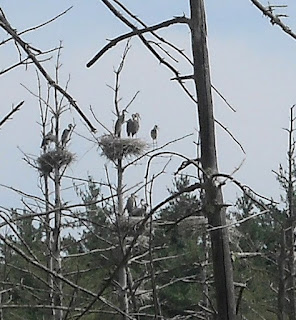 Byrd with his beloved Maltese Billy Byrd who died in 2002
Byrd with his beloved Maltese Billy Byrd who died in 2002I will continue my posts on touring wild Concord but today I wanted to pay tribute to Senator Robert C. Byrd (D-W.Va.), who died Monday at age 92. He was the longest-serving member of the U.S. Senate and today he made one final visit to the chamber where he spent 51 years to lie in repose, allowing members of Congress and the public to pay their respects.
Like me, you may not have known that he was a longtime animal welfare advocate. I learned this when I read A Humane Nation, a blog by Wayne Pacelle, President and CEO of The Humane Society of the United States. The following are excerpts from his June 28 post on Remembering Robert Byrd, Lifelong Leader for Animals:
As a teenager, he butchered hogs. But later in life, he came to love animals in a profound way, especially his beloved Billy Byrd, a Maltese. While he voted for the Humane Methods of Slaughter Act in 1958, it was during the last decade of his career in office that he truly made his mark on animal welfare, his love nourished by his relationships with his dogs and his conscience pricked by cases of cruelty, especially in livestock agriculture. He worked to increase funding for enforcement of all major animal protection laws, to halt the slaughter of American horses, to crack down on animal fighting, and to reform industrialized agriculture. He took to the floor of the U.S. Senate time and again during the last decade, arguing for the proper care and decent treatment of all creatures.
Today, as a tribute to his extraordinary and impactful work, I excerpt some of the most memorable lines from his Senate speeches:
About the extreme confinement of animals on factory farms: "Our inhumane treatment of livestock is becoming widespread and more and more barbaric. Six-hundred-pound hogs -- they were pigs at one time -- raised in 2-foot-wide metal cages called gestation crates, in which the poor beasts are unable to turn around or lie down in natural positions, and this way they live for months at a time.
"On profit-driven factory farms, veal calves are confined to dark wooden crates so small that they are prevented from lying down or scratching themselves. These creatures feel; they know pain. They suffer pain just as we humans suffer pain. Egg-laying hens are confined to battery cages. Unable to spread their wings, they are reduced to nothing more than an egg-laying machine."
About the inhumane treatment of farm animals: "It is one thing to determine as a culture that it is acceptable to raise and rear and then eat animals. It is another thing to cause them to lead a miserable life of torment, and then to slaughter them in a crude and callous manner. As a civilized society, we owe it to animals to treat them with compassion and humaneness. Animals suffer and they feel. Because we are moral agents, and compassionate people, we must do better."
About cruelty to animals: "Animal cruelty abounds. It is sickening. It is infuriating. Barbaric treatment of helpless, defenseless creatures must not be tolerated, even if these animals are being raised for food -- and even more so, more so. Such insensitivity is insidious and can spread and is dangerous. Life must be respected and dealt with humanely in a civilized society."
And from a stirring speech in 2007 where Sen. Byrd condemned dogfighting: "The immortal Dante tells us that Divine Justice reserves special places in hell for certain categories of sinners. I am confident that the hottest places in hell are reserved for the souls of sick and brutal people who hold God's creatures in such brutal and cruel contempt."
















































